The content of the article
The ringed aquatic cobra is a rather covert and rarely seen on the eyes of people a snake. Note that the information on the habitats of this species of reptiles is rather contradictory. According to some experts, the cobra lives exclusively in reservoirs of small size, while others insist that the main habitat of these snakes are large water sources.
Ringed aquatic cobra belongs to a large family of water snakes, respectively, the color of this waterfowl reptile is typical for members of this group. Also, like other cobras, this water snake has a characteristic part of the body - a swelling hood. Cobra got its name due to the presence of wide black rings, which are located throughout the body of the snake. Note that this type of cobra is one of the largest, the main place of distribution is the African continent. Snake bite - deadly to humans.
Appearance
The body structure of the ringed cobra is quite dense, the color is contrasting, very bright and eye-catching. The main color of the snake's body is dark yellow, almost brownish. Reptile's belly is pale yellow. The tail part is completely black. The entire body of the reptile is decorated with characteristic black rings, which are often found only in those species of reptiles, whose habitat is the African continent. In appearance, a ringed water cobra resembles such a species of snakes as a giant Brazilian, which is why, in fact, often inexperienced tourists or travelers confuse this species. However, these reptiles have completely different habitats.
The size of the water cobra is rather large, which is why this species can compete with other African cobras - up to 2.7 m long. The body shape of the snake is cylindrical, rather heavy, closer to the tail section.The skin surface is very smooth and shiny because of what this reptile is very much appreciated by professional snake catchers. Snake skin is usually used to create expensive accessories.
Spread
The main habitat of the species is the waters of equatorial Africa. However, this type of reptile is found not only near water bodies, but also at a fairly large distance from the water, which happens rarely. Most often, this snake chooses well-hidden, secluded places for its habitat.
Behavior features
The snake is more active during the daytime, although when necessary it also hunts with the onset of dusk. This reptile is not aggressive, bites a snake only in rare cases.
The depth to which this water snake is capable of diving is quite significant - up to 7 meters, while the time spent under water reaches 10 minutes. Although this reptile is quite mobile in water, on land it is very slow. If she felt the danger approaching, she would prefer to hide on land. If the danger can not escape, the snake, as a rule,adopts a belligerent posture, which means raising the torso with simultaneous swelling of the skin hood, accompanied by a loud hiss. Note that a cobra will never attack a human first, so that the reptile needs to be provoked in order for it to do so.
The bite of a water snake is very dangerous to human health and life, characterized by a paralytic effect, accompanied by tissue necrosis.
Power Features
Breeding species
Today, very little is known about the reproduction process of this water snake. It has not yet been studied, what is the average number of eggs in a clutch, the duration of incubation. Under conditions of detention in captivity, this species of reptile is very rare and today its representatives are only in several large world zoo centers.
The well-known information about this species of snake suggests that cobras are egg-laying reptiles, the offspring are born immediately poisonous, the snake cubs feed on exclusively small fish.

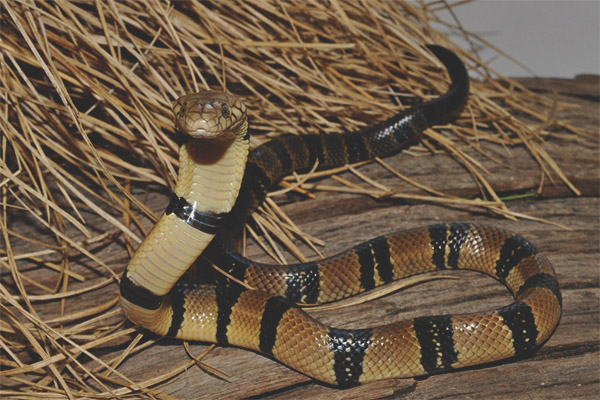
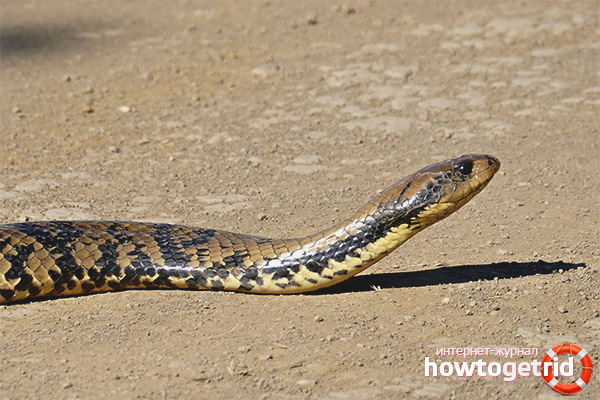

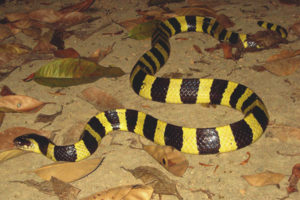

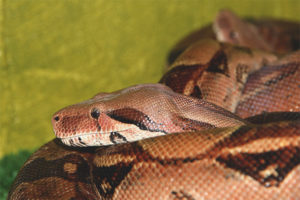
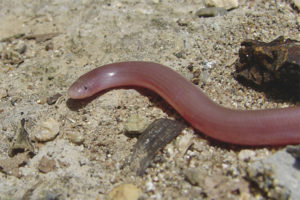

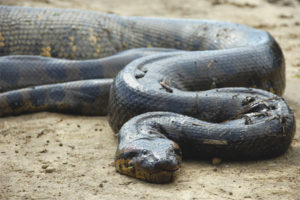

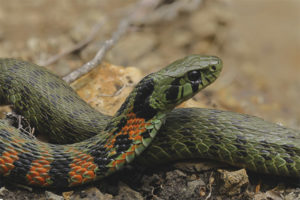
To send